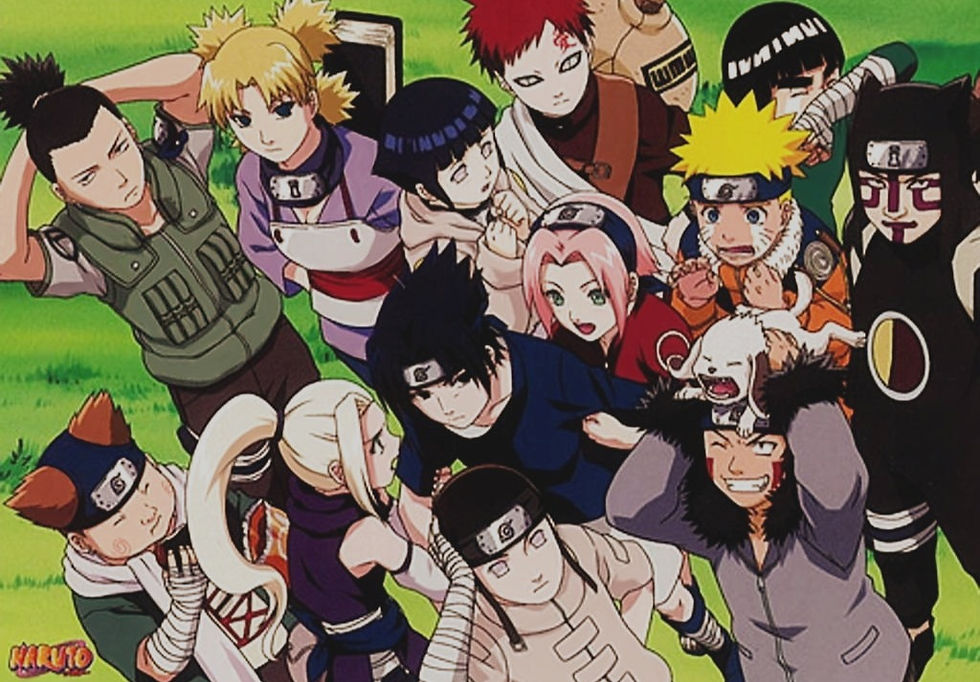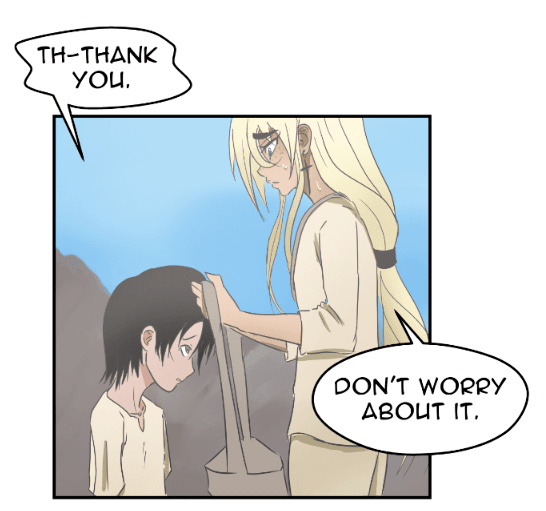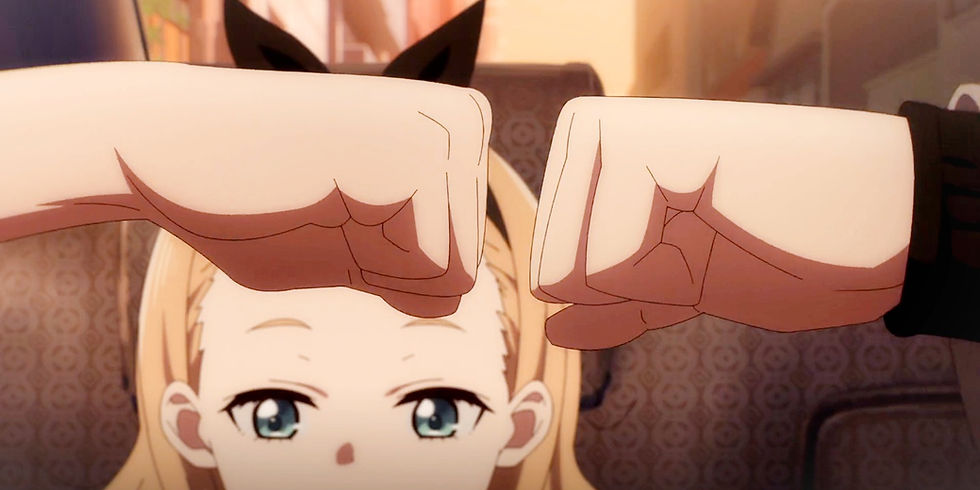Creating Character Relationships
The relationships in a webcomic story are as important as the plot. Character relationships are an effective way to create conflict in your story. They lead to interesting scenarios and give readers secrets and drama to latch onto. Moreover, the relationships in stories let readers explore different sides of a character and makes them more realistic.
This blog will go into the different types of relationships you can give your character. Also, I will explain some ways you can use character relationships to add drama and emotional impact to your story.
Types of Character Relationships

There are many types of character relationships, similar to real life. They can be a character’s family, friends, work relations, community, etcetera.
Family tree
Creating a family tree for your character will give you a large base of relationships. You can have the usual aunts, uncles, cousins, parents, children, and grandparents. You can also include adoptive parents and create an adoptive family tree. Additionally, there are long-lost family members, and ancestors to consider. For example, the ancestor could be a notable person in history, or maybe they come back to life and are prominent in the story.
Creating a family tree will allow you to extend the relationships to distant relatives. Moreover, you can also include relationships of family members. For example, Your character’s sister’s friend, whose boyfriend hates your character. Or your character who has a crush on their sister’s tutor.
Lastly, family in this case does not have to be the same species as your character. One example is a family pet dog.
Quick tip –
It can be helpful to create a family tree and relationship tree for your characters. This will help you not get confused. It’s especially useful if you're planning a long webcomic.
Daily Life
When creating a character, it's important to think about their daily life and what it looked like before the story began. This will help you identify characters your protagonist interacts with regularly. Moreover, it’s a great way to get to know your character, their likes, dislikes, and personality.

You can think about where your characters go every day and who they meet in those places.
For example, a fourteen-year-old would regularly go to school and interreact with teachers, other students, bus drivers, and other commuters.
Also, consider who your character meets that isn’t natural for them to interact with. For example, it’s not natural for a student to meet a police officer every day unless they were taking a similar bus route. This mixes up the possibilities of relationships that your character can have. It adds a level of unexpectedness.
Why is the student meeting the police officer? What type of relationship do they have?
Some people plan meetings or gatherings with others, although it might not be a part of their daily life. The meeting can be informal, such as with friends, or formal such as with an interviewer.
For example, a character who works as an investigator might regularly interact with criminals. You could go deeper and consider the type of criminal they interact with. What case are they working on? Do they have a partner? What types of meetings would they have?
Another thing to think about is how your character’s daily life changes throughout the story. Do they move to another location and meet different people? In the webtoon Lucky, the protagonist leaves his home planet. From then on, his daily life on earth is centered around spending time with his friends.
Quick tip -
Consider your character’s hobbies, occupation, age, interests, relationship status, and income when thinking about relationships in their day-to-day life.
Community

The communities your character is part of are a large source of relationships. The character can be a part of multiple communities for example churches, charities, and hobby groups. This can also include neighborhoods and location-based communities.
Generally, the character will have positive relationships with their community members because they share something in common which unites them. For example, Church goers share the same religion and will have similar values. However, this doesn’t always have to be the case. For example, the main figure in that community could have a negative relationship with the main character. After all, breaking expectations and stereotypes is a good way to surprise and pull in readers.
Quick tip -
Consider what communities your character is part of now and in the past. Who are they close to in that community? Who do they dislike?
Character Relationship Dynamics
Google defines dynamics as, "the forces or properties which stimulate growth, development, or change within a system or process."
Relationship dynamics is how the relationship between two or more characters change throughout the story. The way characters interact with each other plays a huge role in the dynamic of their relationship.
After defining the types of relationships your characters have evaluate how positive or negative those relationship are. Also, decide how close you want your characters to be. This will provide a starting point for creating interesting dynamics between characters.
Circumstances in the story will affect the character’s goal. This is one of the things that lead to complications, disputes, and drama. Similarly, the different personalities will cause confrontations and create a variety of interactions.
Overall, the elements that influence a character's relationships are their goal, personality, and beliefs.
Lucky
In the webtoon Lucky, we see how the main character who is usually kind and lovely, becomes more on guard and hostile in the presence of Francis. Francis is a character who the protagonist, Lucky dislikes.
Quick tip –
Think about what other characters would say about your character and how they would describe your character.
Goals
Every character in a story should have a goal. But the goal doesn't have to be overly ambitious.
Characters with a goal will feel like they are more than just a prop in the story. They will come to life with a purpose and play a role in the plot. In addition, they will cause events to happen which will force your protagonist to react. These reactions will give readers a more in-depth view of that character.
Moreover, characters can form relationships based on their goals. Likewise, goals can lead characters to be hostile toward each other.
Ava’s Goals

In the webcomic Ava’s Demon, the demon’s goal is to get revenge on her enemy. However, she is stuck in the body of a human girl. The only way for the demon to be free is for Ava, the human, to die. For this reason, the demon has been tormenting Ava for over a decade.
The relationship between Ava and her demon improves when Ava dies. Ava wants a second chance at life. The demon wants revenge. So, they form a pact and help each other achieve their goals. Although their relationship is still rocky, they are forced to work together.
One Piece goals

In One Piece, every character on Luffy’s crew has a different goal. Regardless, they have come together as crewmates because of their goals. They help each other achieve their aspirations.
In comparison, Luffy, Trafalgar Law, and Big Mom all have the same goal. All three want to be Pirate King. However, Luffy and Trafalgar Law are allies, while Luffy and Big Mom are enemies.
The difference comes from the character’s ideals and personalities. Because of this Luffy can’t see Big Mom as an ally. She is cruel, and selfish and hurt the people who Luffy cares about.
On one hand, Trafalgar Law and Luffy don’t seem to get along. Trafalgar Law likes order and organization, and Luffy likes to wing it. On the other hand, they share many mutual enemies and ideals. They both care about their crew and try to tolerate each other. The dynamic between them is also very funny.
Personality

A character’s personality will influence who they are more likely to form positive relationships with. It also influences the dynamics of that relationship. For example, if a character is lazy, they might slack off and leave all the work to the hard-working teammate. As a result, their relationship could be sour and full of arguing.
It's highly recommended to have a variety of personalities in your webcomic. This is especially true for characters with opposing personalities or beliefs. Bringing conflicting or very different characters together sparks conflict, and tension and creates entertaining interactions.
It pushes the characters to reveal more sides of themselves, makes them feel more realistic, and creates unexpected moments for readers. Comedy anime usually do this very well.
Quick tip -
Goal and personality make a relationship either positive or negative. However, a range of factors affects how close the two characters are. For example, in romance webcomics, two characters who hate each other are sometimes forced to live together (physical closeness).
Yin and Yang
A good way to use character relationships is to create a Yin and Yang dynamic. This would include two main types of relationships. The first is a relationship where your character loves and cares for someone. The second is a relationship with a character who mistreats your protagonist. These two relationship types should appear in the first chapter. Or you can include them close to the begginning of your story. As a result you will be better able to create a protagonist who readers will like from the start.
This is because the Yang relationship shows how caring and loving your character is. Meanwhile, the yin relationship makes readers feel sorry for your protagonist. It makes readers feel like your protagonist doesn’t deserve the mistreatment. The combination leads to a character who readers want to see happy.
Readers follow the story to whiteness the moment the character achieves their wants. Similarly, readers anticipate when the character will escape their terrible situation.
Relationships in The Remarried Empress
In the webtoon 'The Remarried Empress', the Yin relationship is between the protagonist, Navier, and her husband, Sovieshu. At the start, Navier finds out her husband might be cheating on her. Sovieshu lies to Navier and when she confronts him about it, dismissing her coldly.
Meanwhile, the first Yang relationship occurs between Navier and her ladies-in-waiting.

In the first three chapters, we see how kind Navier is to her ladies-in-waiting and how much she cares for them. They talk like best friends as they do her hair. As an Empress, Navier doesn’t have to treat them well, but she does because she cares about them. Conversely, Sovieshu is bitter and hostile towards Navier. He disregards her and expects her to be friends with his mistress.
Relationships in Alta
In the webtoon Alta, Emma’s Yin and Yang relationships are mostly about her environment, and community.
Emma is a slave who mines magic stones every day for several hours. The environment she lives in is harsh, and the community she lives in is harsher. In the first few chapters, we see how much the characters are struggling to survive. The creator illustrates a dry and barren village, a lack of water and food. No one cares for anyone else except for themselves. The only ones who benefit are the characters with power.

Meanwhile, Emma is shown as compassionate and kind-hearted. She attempts to help a young boy with no arms since he has no way to mine for himself. The positive rapport between the two characters is the first Yang relationship dynamic readers are introduced to.
There are other positive and negative relationship dynamics in Alta, however, those are the ones that appear earliest.
Change and growth
“A relationship that has a life and changing dynamic of its own is inherently more fascinating than one that is simple and easy to explain. It has more places to go.” - Donald Maas
A character's relationships should rarely stay the same. It should move between love and hate, peace and conflict, and evolve as the story progresses. This keeps the reader’s attention and creates an emotional impact.
In real life, people’s relationships don’t stay in one emotional state. Sometimes married couples hate each other one moment and then love each other the next. The same can be said about friends and siblings. People unfortunately sometimes grow apart with time or become enemies. This is why it can be helpful to use real life as a basis for character relationships.
The change doesn’t have to be drastic. Characters in the webtoon Lucky have moments of annoyance, anger, and love for each other.
Even the relationship between the protagonist and antagonist doesn’t have to be full of hate.
Lycoris Recoil
Lycoris Recoil is an anime about high school girls who fight off terrorist attacks against Japan. The protagonist Chisato and the antagonist Majima hold very different beliefs about crime, peace, and law keeping. However, they are both quite similar. (They’re both gifted individuals who hate being told what to do. But the same person is constantly telling them how to live their life.)

In one moment Chisato and Majima will be fighting to the death like a physical debate over their beliefs. But in the next second, they will be sitting and talking over drinks or discussing movies together. The sudden shift between trying to kill each other and then joking together keeps the scene interesting and refreshing. The peace makes the fighting more intense. It also makes us value the two characters as we get to know them through their interactions with each other.
Many viewers of the anime respect Majima because of his weird relationship with Chisato. And Chisato’s perception of him has shifted along the way. They are enemies trying to kill each other with the potential to be friends. There is a constant shift between the two states.
This anime presents long-term and short-term changes in the relationship between the antagonist and protagonist. The short-term changes happen in their dialogue, fights, and short interactions. The long-term changes occur as Chisato gets to know Majima.
In addition, you create drama for readers as the character’s relationships transition throughout the story. Readers anticipate when the male and female lead will get back together after an argument. Similarly, readers want the protagonist to realize their best friend has been tricking them.
To change the relationship between two characters give them different goals or send them on different paths of self-discovery. You can make one of them realize different ideologies and beliefs in a character arc.
Backstory
Your character’s backstory and past will influence their personality, how they treat others and the quality of their relationships. Is your character hiding secrets from their spouse? Does someone from their past return? Or is there an event from the past that haunts two friends?
A character’s backstory is also a source of hidden connections. In Lucky, the main character is being ‘hunted’ by Red. Interestingly, Red is also the one who helped look after Lucky a long time ago. In some romance stories, the antagonist is the protagonist's parent.
It’s interesting to bring back characters from your protagonist’s past to see how the situation affects their current relationships. Does your character’s biological father return? How does this affect their relationship with their stepfather? How does the stepfather react?
Consider how the character’s relationships are now, compared to the past. Who from the past is the character unable to forget and why?
Quick tip -
Its helpful to create a backstory for other important characters, not just your protagonist. This gives you more to explore when creating drama and conflict and character growth.
In One Piece, we see the past of Luffy’s crewmates when they join. However, Sanji’s past was not the full story. Over 800 episodes after we first meet Sanji, Eichiro Oda shows us the full picture as Sanji’s past returns to him. This leads the crew into personal conflict with Big Mom and splits them into two groups.
Character Trauma
Trauma is something that heavily impacts people’s relationships and how they relate to others. It can also be used when crafting relationships for your characters. Trauma is a part of your character’s backstory. It is usually buried deep in the past and has subconscious effects. It affects the character’s personality as well because of this.
For this reason, you can give your character trauma and tie it to another character which will help in crafting conflict. In addition, it is potential for character growth as you give your character opportunities to overcome their trauma and make new relationships.
Trauma in Unordinary

In Unordinary, John experienced trauma a couple of years before the current story. This trauma still affects him and is ruining his relationship with his only friend. He is trying to avoid repeating the same mistakes in his current friendship but finds himself unable to handle his dissatisfaction with society. To make matters worse, his classmates are constantly pushing him to the edge.

Komentarze